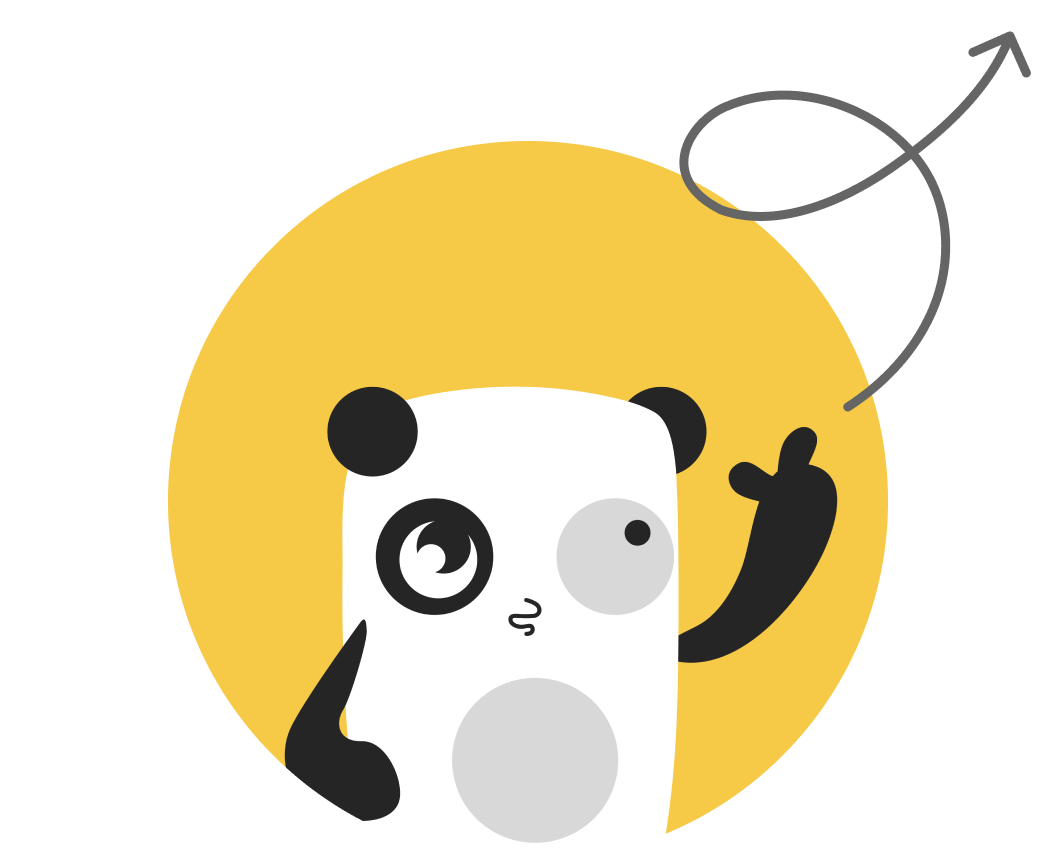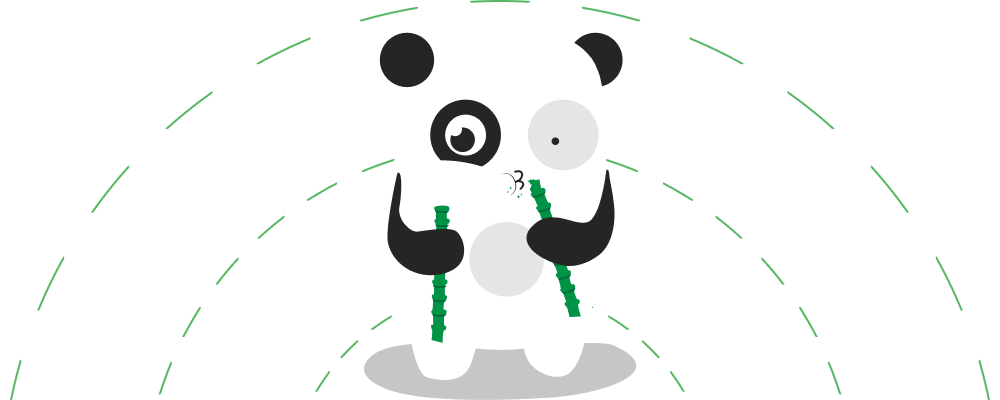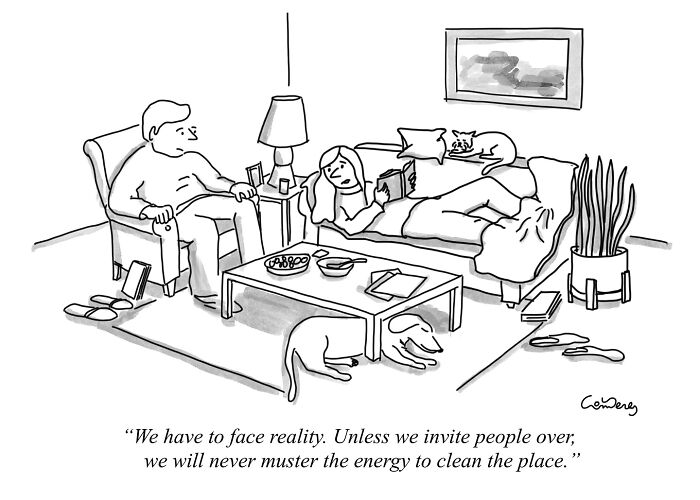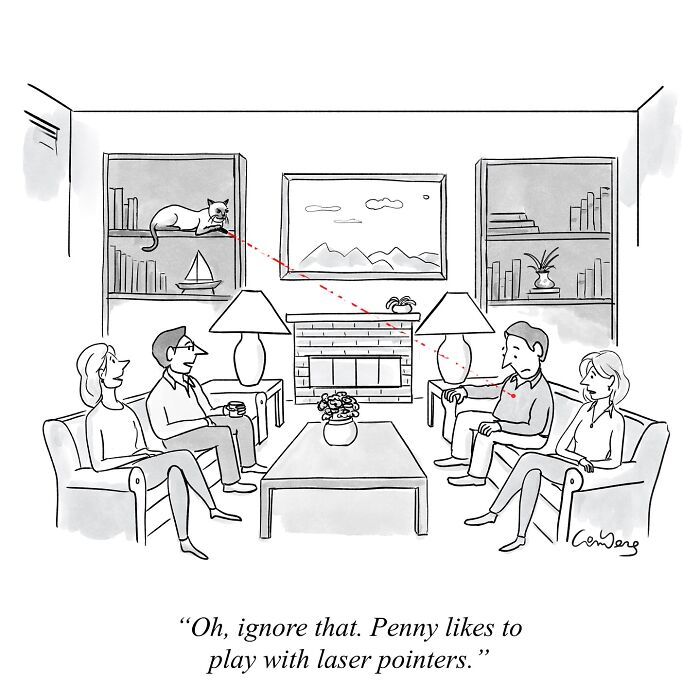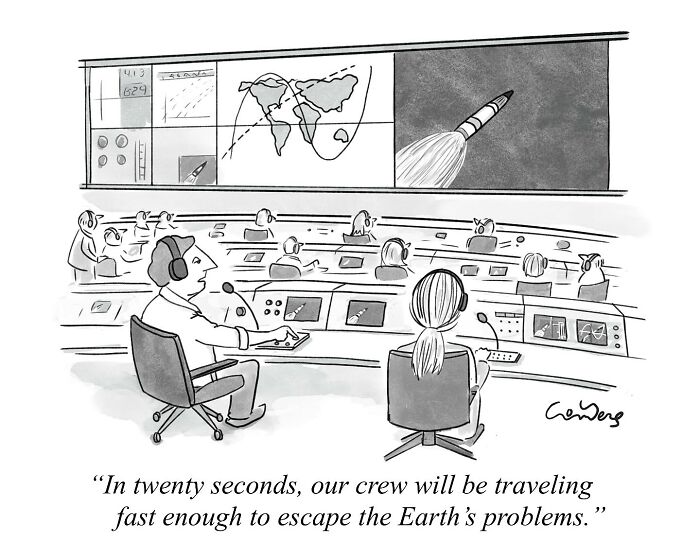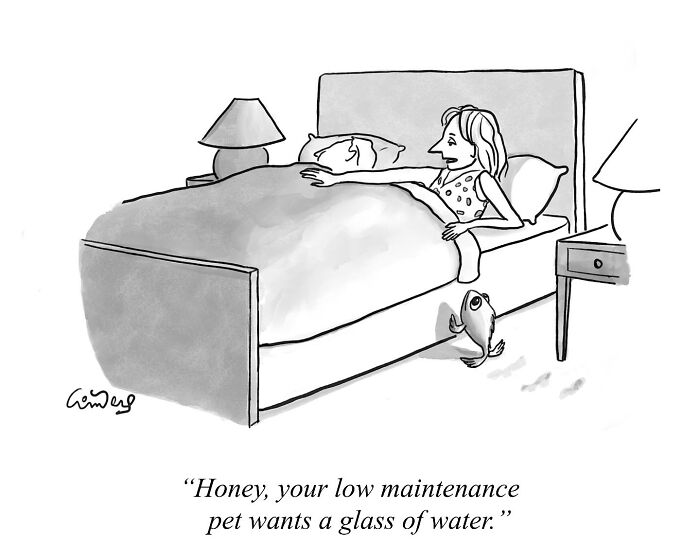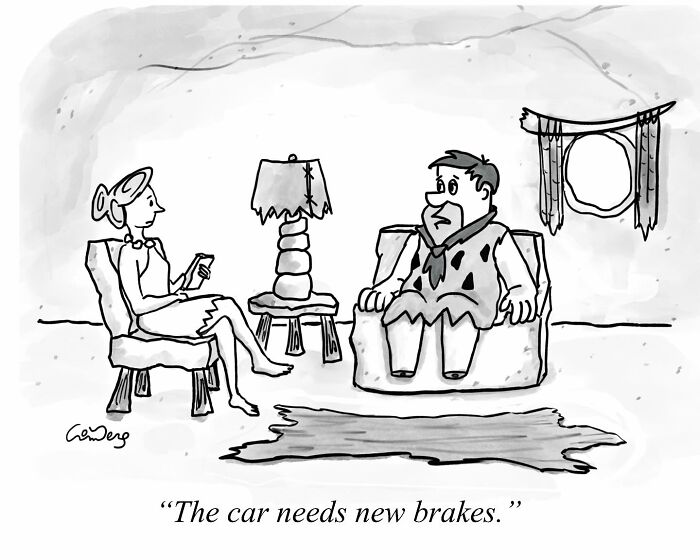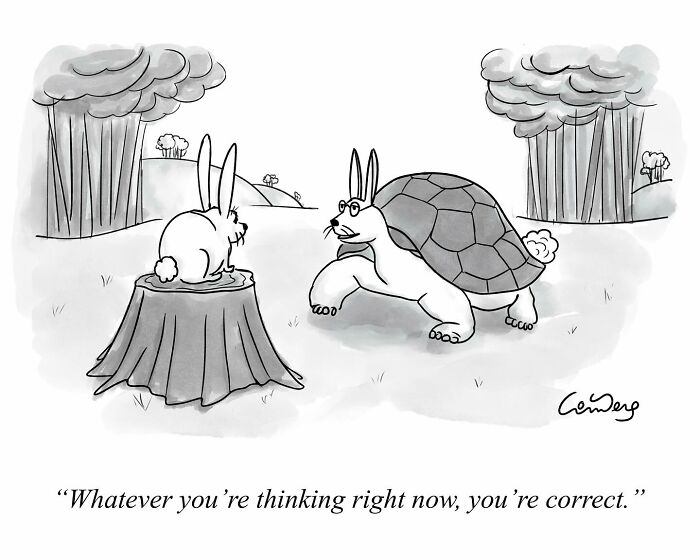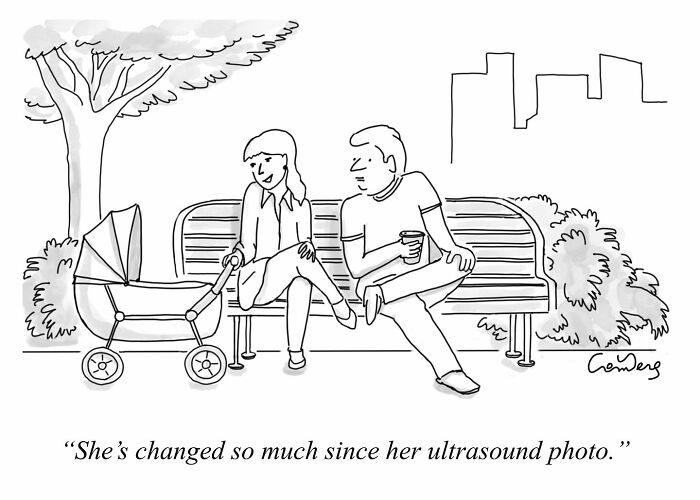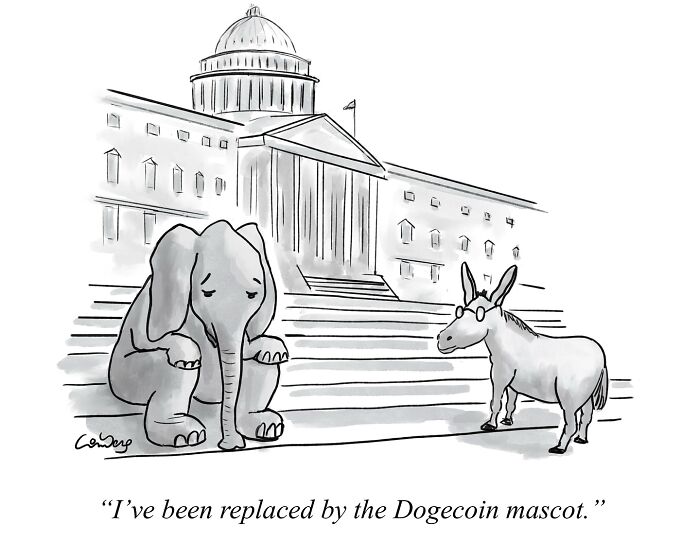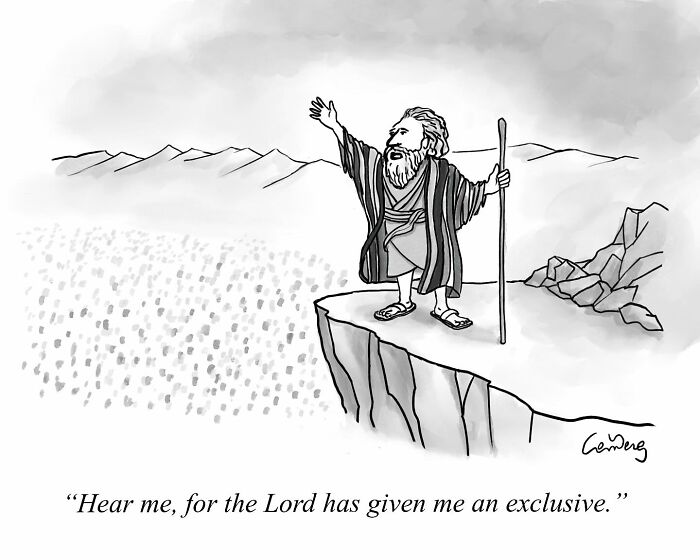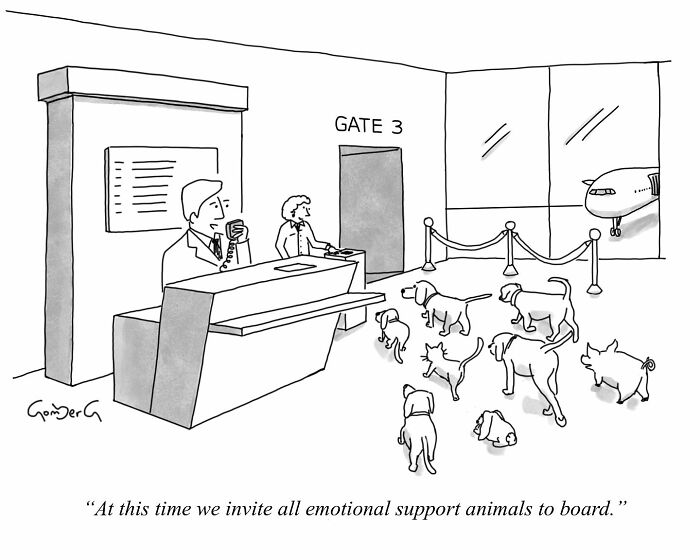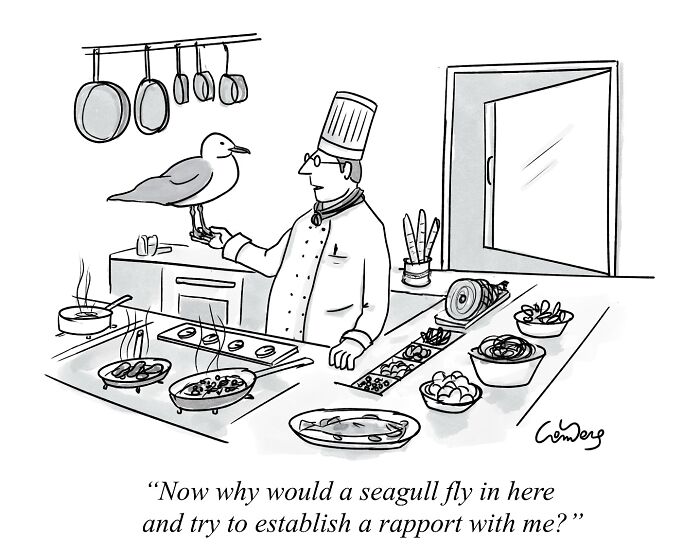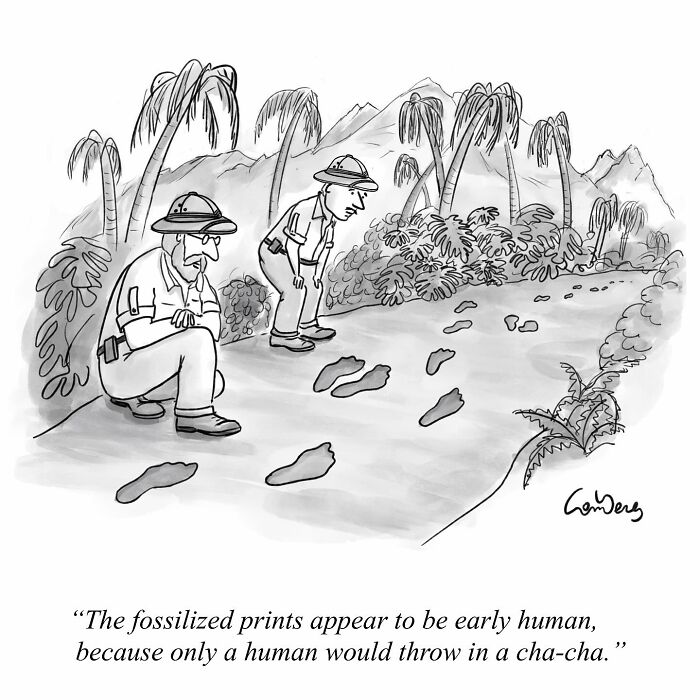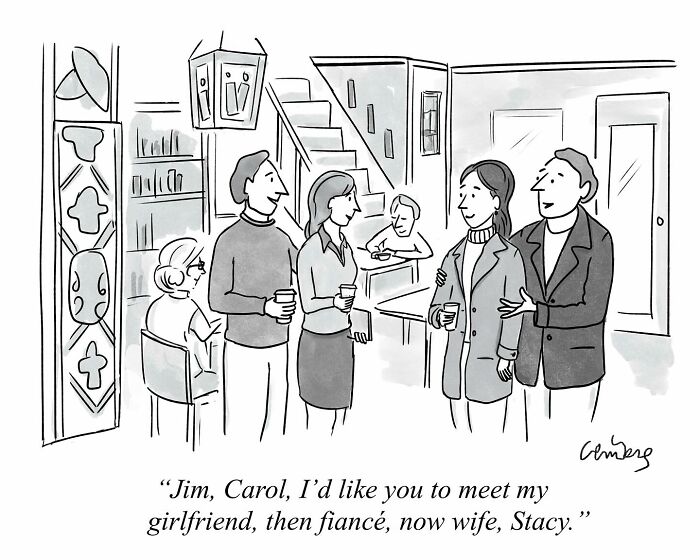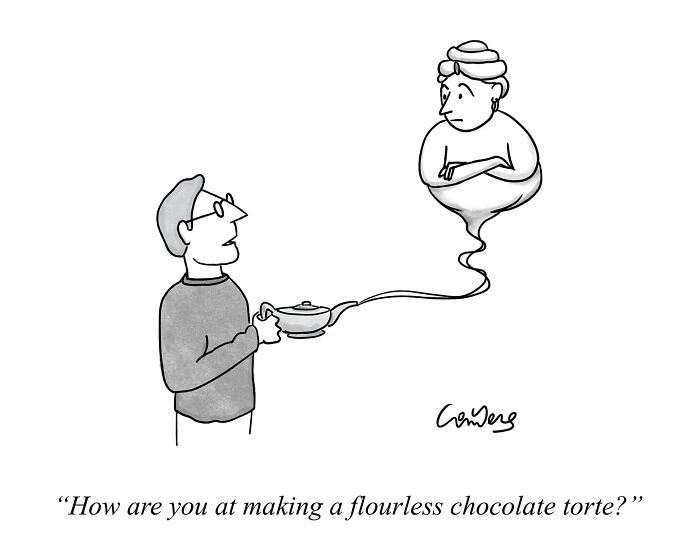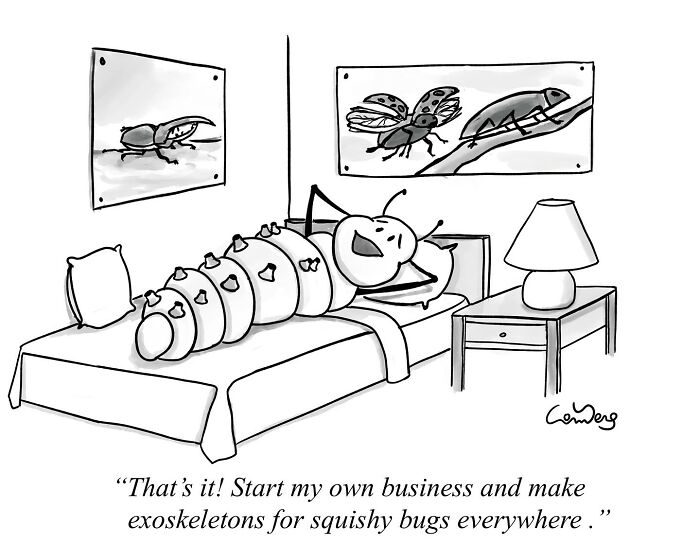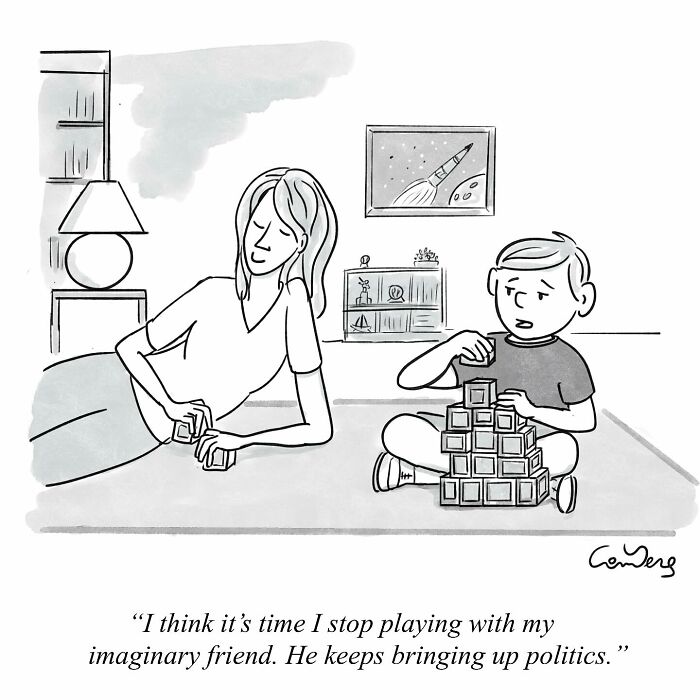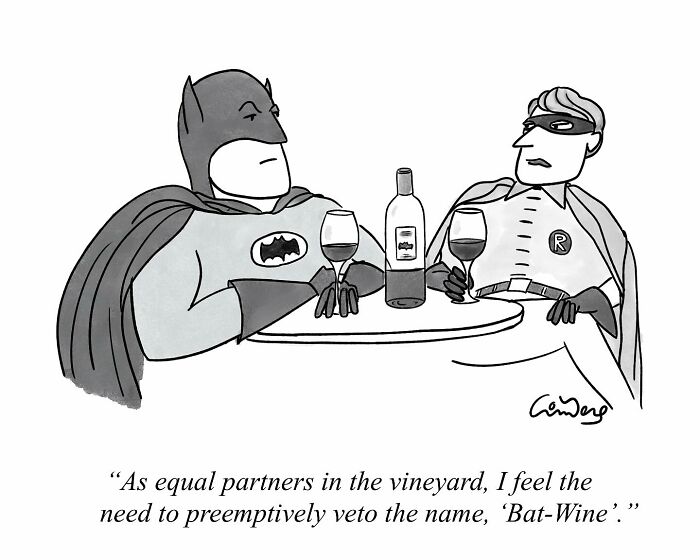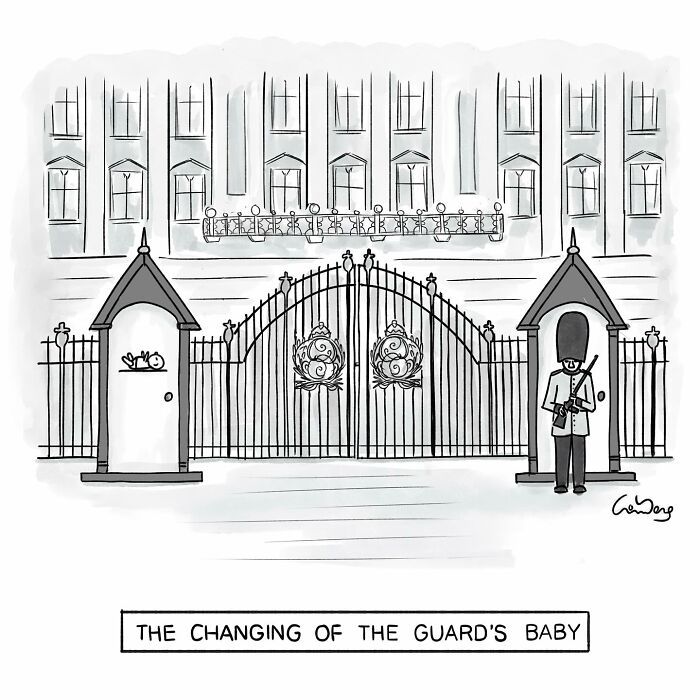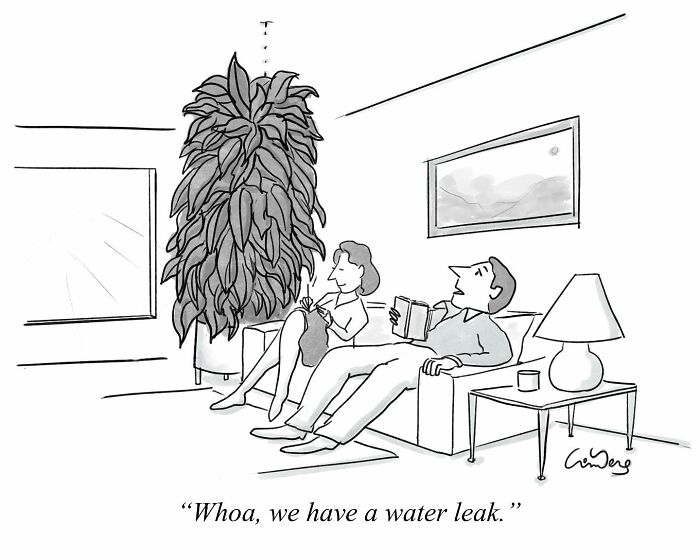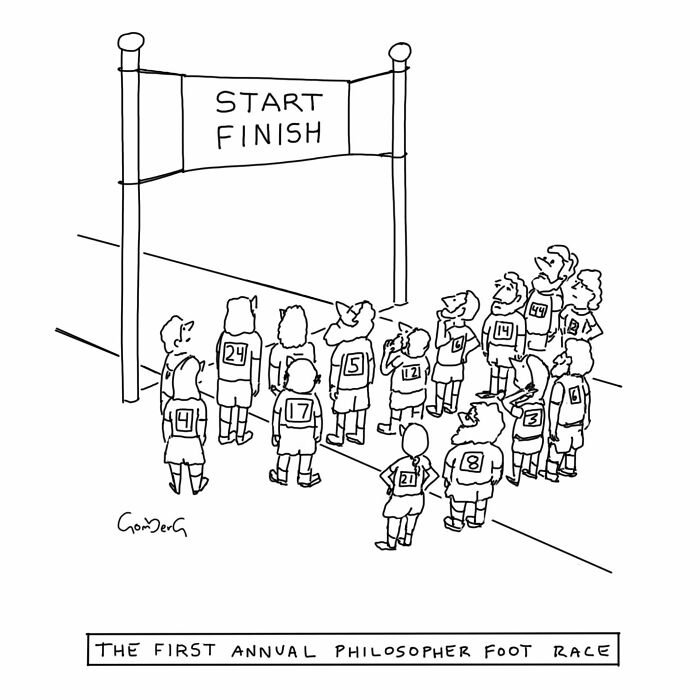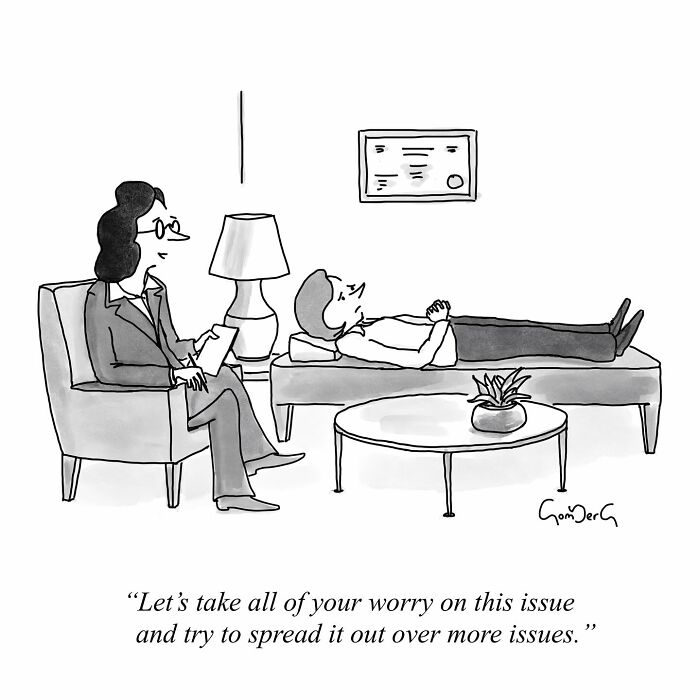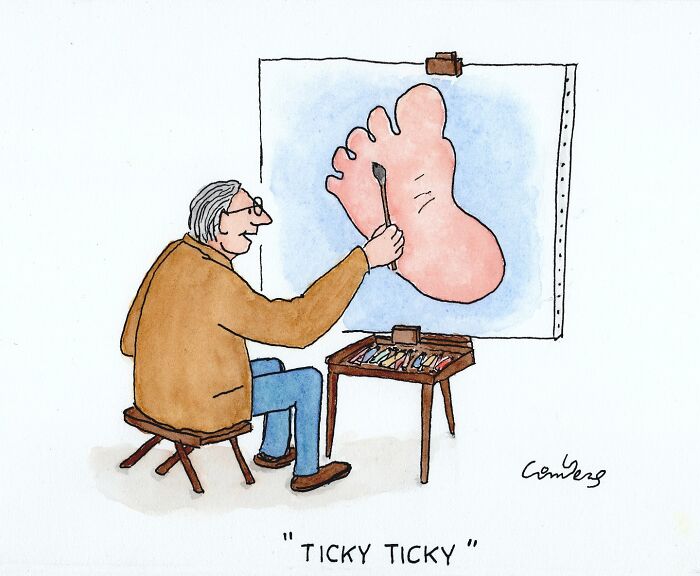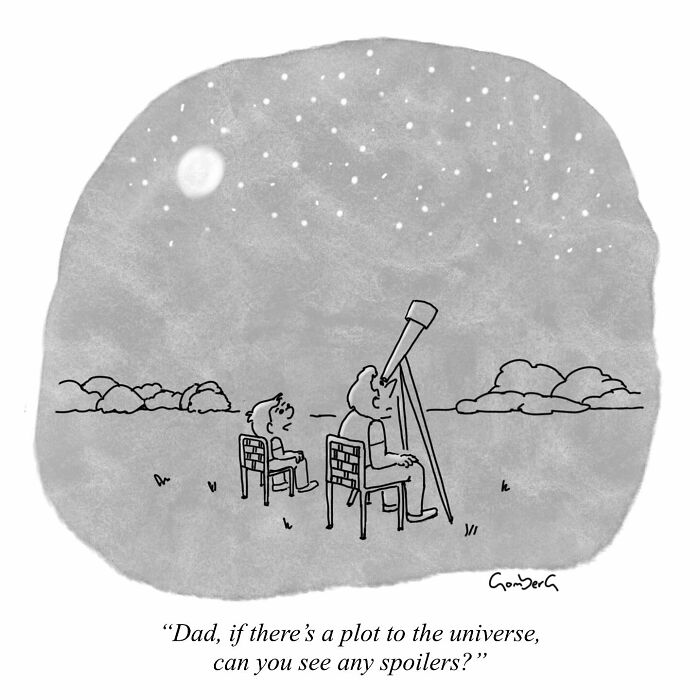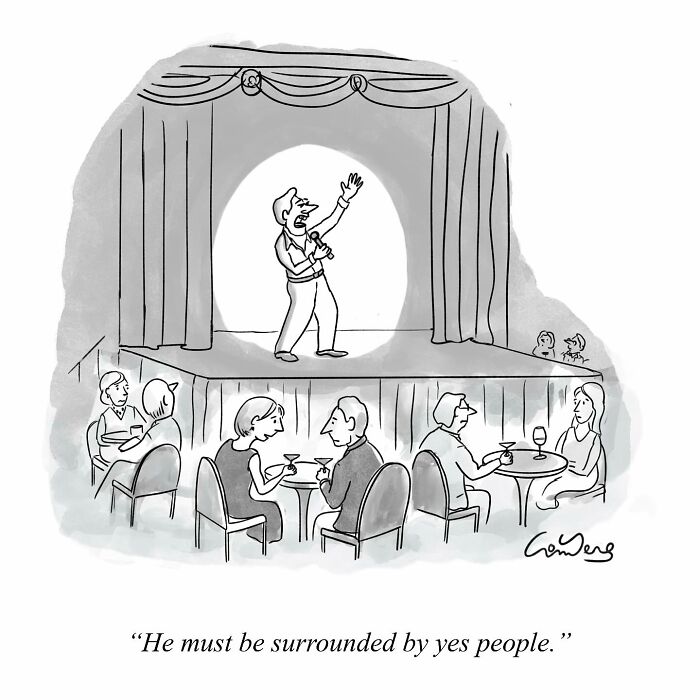
10Kviews
If You Love Smart and Playful Humor, You Might Like These 30 Comics By David Gomberg
Interview With ArtistRight before the weekend starts, we’re here to bring you a little entertainment—something to lift your spirits and set the right mood. This is all made possible thanks to David Gomberg, a cartoonist whose work has been featured in prestigious publications such as Air Mail, The Wall Street Journal, The Times London, Weekly Humorist, and American Bystander. This time, he has kindly agreed to share a collection of his cartoons with our Bored Panda community.
If you’re curious about what to expect from David’s series, he describes the topics as wildly varied and unpredictable. However, there is a specific theme he tends to lean toward: “I do favor the absurd—situations that would never happen in real life. I also enjoy creating caption-less cartoons. If there’s an opportunity to create something without dialogue, I will.”
If you’re curious to discover a selection of Gomberg’s comics and learn more about the artist, keep scrolling down.
More info: Instagram | Facebook | david-gomberg.com | davidgomberg.substack.com
This post may include affiliate links.
Bored Panda wanted to learn more about David’s work, so we reached out to him and asked a few questions. First, the artist shared what inspired him to start creating comics: “As a kid, I watched a lot of cartoons on TV, and my favorite had to be The Pink Panther because they did so much with just animation, cool music, and sound effects. No dialogue.
Then, there were the Sunday newspaper comics. I went straight for the single-panel comics, which seemed to suit my attention span. When ‘The Far Side’ came out, I was blown away. That was the only comic I ever collected, book-wise.
In high school, I liked music, and I studied photography and graphic design, but I didn’t see a clear path to making a living with these. So, in college, I studied Computer Science and made that my living.”
Gomberg went on to explain how his father played a key role in shaping his passion for humor: “Cartooning came back into view in recent years when my father, a graphic artist, showed me a stack of cartoons that he created in the 1950s. So professionally drawn and funny! He had been published a few times, too.
He then introduced me to the work of many other cartoonists, particularly the French artist and cartoonist André Francois. He does amazing work with mostly caption-less cartoons.
I think it was at that point when I asked myself, if I drew a cartoon, what would it be? So I tried it.”
When asked about his creative process, David kindly shared how he comes up with ideas for new strips: “It’s hard to say. A germ of an idea might pop up at any time, sometimes in mid-conversation. I almost have to leave the room to jot it down because I know it would just flutter away otherwise. I also have a regimen where I sit and noodle around on a blank page or start writing gibberish. Just showing up like that can sometimes spur something.”
We were also curious about which contemporary artists Gomberg personally admires. Here’s what we found out: “Many, but one in particular is Ed Steed. He definitely swims in his own hilarious swim lane. I recently had an opportunity to meet him at one of his book events, super nice guy. When someone asked him about his influences, I smiled ear to ear when he mentioned André Francois.”
Lastly, David told us about the most rewarding aspects of being a comic artist: “You know when you’re dreaming, and you have no idea what’s going to happen next, yet it’s you who’s creating the whole dream? Weird, right?
For me, the cartooning process is similar, except it takes way more conscious effort. Still, it’s almost like watching a movie or reading a book in that I never know the ending or the path along the way. Things morph and change a lot, and it’s that workflow that compels me to want to do it again and again.’
He added, "The other reward is if my cartoon somehow resonates with another person. There’s some connection there, like we’re sharing a laugh together.”
Where were the "brilliantly funny" ones? Mild amusement at best. Please stop over-hyping stuff.
David is a cartoonist's cartoonist - and a terrific artist. Look for him soon in The New Yorker (long overdue)!
Where were the "brilliantly funny" ones? Mild amusement at best. Please stop over-hyping stuff.
David is a cartoonist's cartoonist - and a terrific artist. Look for him soon in The New Yorker (long overdue)!

 Dark Mode
Dark Mode 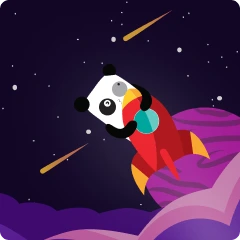

 No fees, cancel anytime
No fees, cancel anytime 